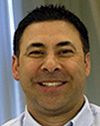
The goal of CAUT’s equity work is to achieve inclusiveness, not only with regard to social and economic justice for members of marginalized groups but also to ensure their full participation in the academy. CAUT believes an inclusive university or college is one that is proactive in eliminating barriers so that all members of the academic community can participate fully in their work, their workplaces and the broader campus community.
The visions, values and activities of our institutions must respect and reflect a diversity of identities, cultures, ideas and experiences brought forth by all members of the academy, especially members of groups which have historically been marginalized or silenced. CAUT expects this of our universities and colleges; it can demand no less of itself.
CAUT recently reorganized to promote equity by giving voice to the full diversity of its membership. The executive committee now has elected member-at-large positions to represent aboriginal and francophone academic staff in addition to two elected chair positions to lead the association’s new equity and diversity council.
The council is composed of two members from each of four newly-created working groups formed to make recommendations on initiatives CAUT and its local members should take to advance the interests of academic staff with disabilities, lesbian, gay, bisexual, transgendered, queer and 2-spirited academic staff, racialized academic staff, and female academic staff.
As a standing committee of CAUT’s governing body, the council’s primary role is to facilitate information sharing among the working groups. It also has a mandate to identify and advise on issues impacting equity and diversity within CAUT and the academy.
This new organizational structure will derive strengths from the interactions, exchanges and overlaps among the different working groups. Through the council, CAUT will develop a new awareness of the intersectionality of multiple and simultaneous equity dimensions. The life experiences of a racialized woman with a physical disability, for instance, are shaped by the intersection of the multiple aspects of her identity. These different aspects do not act independently of each other.
Over the past months I have participated in meetings of the different working groups and the equity and diversity council. I can attest to the enthusiasm and energy with which the individuals involved are taking up the discussions around equity on behalf of marginalized groups and CAUT. This bodes well for our organization. The new positions on the executive and the active participation of the members of each working group are vital to this venture.
At its inaugural meeting in August, the equity and diversity council raised many concerns, but also brought forward many ideas. Members acknowledged the need to define the terminology and principles around equity and diversity and to identify effective strategies to push our institutions to take equity seriously. They recognized the importance of collaboration among the working groups and the need to educate about and practice intersectionality in their proceedings.
The notion of an equity and diversity toolkit was endorsed as a means to assist individuals and local associations in advancing equity. Such a kit could include policy statements, model language, checklists, supporting data, shared stories and other resources. Equity networks or hubs could be established to ensure information, resources and informed practices are shared in an effective manner. Another suggestion proposed the council and working groups review CAUT policies and practices from the perspective of equity and diversity and recommend useful changes.
CAUT’s re-visioning of the paradigm under which it does its equity work will provide the right mechanism to move forward on this important agenda. We are committed to providing both the national direction and support to encourage and assist local academic staff associations in advancing equity work in our campus communities.
Out of this come many opportunities for local associations to engage and mobilize members who have specific interests and expertise in these areas. In the end, taking on this work will succeed in building a broader base of support for equity work and also for the overall work of associations.
Countless examples of effective and engaged work already exist on many of our campuses. These include the creation of caucuses to represent and mobilize members from marginalized groups, efforts to work with employers to strengthen equity training for members on tenure and promotion committees, and membership surveys to assess the status of groups on factors such as salary or representation. Others are working closely with CAUT staff and other CAUT members to move their equity work along effectively.
One message that rings loud and clear through all this is that equity and diversity must be fully integrated into every aspect of the work we do as academic staff associations. Equity and diversity committees are a good start but they cannot be left to work in isolation as an add-on to an association’s efforts. One tangible way for associations to move on this is to host CAUT’s promoting inclusivity workshop for association leaders.
On another front, though, academic staff associations must work hard at the bargaining table in advancing and protecting the interests of all members, but especially those of marginalized groups. Finally, associations, like CAUT, can look at their own organizational structures to see how much they reflect diversity among the membership and a commitment to equity.